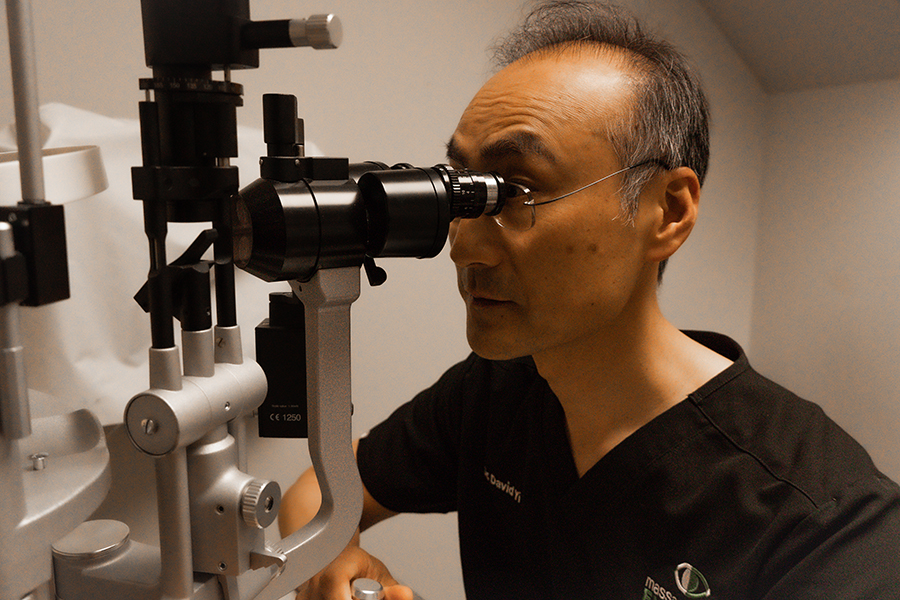IOL Options
What is a cataract and what are the symptoms?

Inside our eyes, we have a natural lens. The lens bends (refracts) light rays that come into the eye to help us see. The lens should be clear, but if you have a cataract, your lens is cloudy.
It is like looking through a foggy or dusty car windshield. Things look blurry, hazy or less colorful with a cataract.
Cataracts are one of the leading causes of vision impairment in the United States. However, because cataracts form slowly and over a long period of time, many people suffer from this condition without even realizing it.
Some vision changes you may notice if you have a cataract include:
- Having blurry vision
- Seeing double
- Being extra sensitive to light
- Having trouble seeing well at night or needing more light when you read
- Seeing bright colors as faded or yellow instead
There is no real way to prevent cataracts, and since they are a natural condition that occurs over time, cataracts can’t be prevented by medicines or diet.
The only way to truly correct your impaired vision is to remove your clouded lens and replace it with a new, artificial lens.
Do I need surgery?
You do not need to have cataract surgery if your symptoms are not too bad. You should consider surgery when cataracts keep you from doing your daily activities. You may also be able to slow the development of cataracts by protecting your eyes from the sun.
If you do decide to have cataract surgery, the good news is that it is a safe, simple procedure performed thousands of times every day all over the world.
And even better, cataract surgery can offer an opportunity to correct other vision problems you might have, such as astigmatism or presbyopia – even if you’ve had them your entire life.
Take Our Cataract Self-Test
What can I expect during cataract surgery?
A typical cataract procedure is quick and relatively pain-free. ln most cases, patients are back to their normal activities the very next day.
When preparing for your procedure, remember the following:
- The surgery does not require an overnight stay, so you will need someone to drive you home the same day
- Before and/or after surgery, your doctor may prescribe eye drops to help prevent infection and reduce swelling
- Most patients experience improved vision very soon after surgery, but your sight may continue to steadily improve
- Only one eye is treated at a time to give each eye time to adjust individually
More than three million cataract procedures are performed each year in the United States alone. The process is fairly simple:
- First, the doctor uses a topical anesthetic to ensure you are comfortable.
- Next, a tiny incision is made in the eye, and an instrument, typically no bigger than the tip of a pen, is inserted. This instrument is then used to break up and remove the cataract.
- Finally, a replacement lens, or intraocular lens, is implanted through the same small incision and set into place.
The whole process usually lasts less than 30 minutes
What happens after surgery?

Following your procedure, your brain will have to learn how to work with your new artificial lens. It might take a few weeks or even several months for your vision to be optimal.
After one year, and every year thereafter, you should have a complete eye exam by your eye doctor to ensure your eyes stay healthy.
While cataract surgery is a relatively safe procedure, there can be some complications or side effects. These complications are relatively rare, and most can be treated successfully.
Talk to your doctor about the risks and benefits of cataract procedures so you can make an informed decision about your options.
Other common vision problems:
While you may have a cataract, it is important to consider these other vision problems and their characteristics.
- Myopia (nearsightedness) – People who are nearsighted can see up close but have difficulty seeing objects at a distance. Myopia is typically caused by your eye having a focal distance that is too short.
- Hyperopia (farsightedness) – Farsighted people can see objects at a distance but have difficulty seeing up close. Hyperopia is typically caused by your eye having a focal distance that is too long.
- Astigmatism – Astigmatism is a common condition caused by an irregularly shaped cornea or lens. This warps or distorts light rays entering your eye, making it difficult for your lens to properly focus the image.
- Presbyopia – Like cataracts, presbyopia is a naturally occurring condition as we age. Over time, your lens hardens, diminishing its ability to flex and focus. The result is poor up-close vision. lf you find yourself holding objects farther away to see them clearly, you probably have presbyopia.
If you think you may need cataract surgery, please contact your ophthalmologist for more information.

